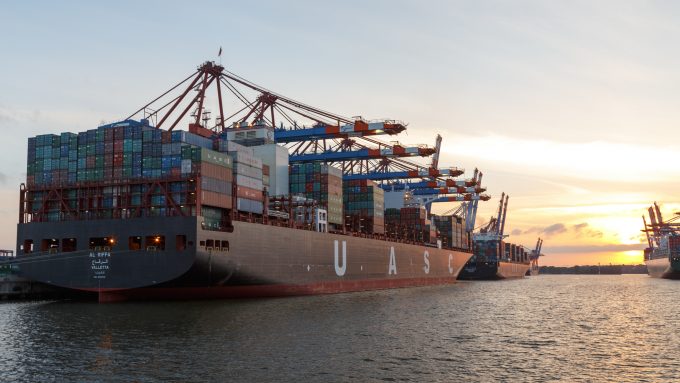Liners unveil Asia-Europe FAK price hikes to arrest steady rate decline
Container shipping lines are looking for a hike in Asia-Europe spot freight rates, announcing a ...

Hapag-Lloyd and UASC today pushed through further consolidation in the liner shipping industry as the pair finally completed their merger.
The UASC brand will be gone by the end of October when the integration will be complete. The merged entity will have a value of about $8bn, according to one market analyst.
A Hapag-Lloyd spokesperson told The Loadstar: “One of the biggest benefits will be cost savings: cost-cutting behaviour can be copied, but true synergies can only be achieved through M&A activity.
“By acquiring UASC we will have the youngest and largest, on average, fleet in the world. And the younger and larger your fleet is, the cheaper the cost per unit.
“It will also greatly diversify our product portfolio.”
The lines expect to see annual synergies of about $435m, with a significant portion realised next year and the full amount achieved in 2019. Hapag-Lloyd also said it would not be necessary to make any sizeable investments in newbuildings in the next few years.
“We believe in the consolidation of liner shippingand have been a driver of this in the past,” added the spokesperson. “In 2005, we bought CP Ships and in 2014 we acquired CSAV – the latter resulted in $400m a year in synergies.”
The combined line will have 230 vessels with capacity of about 1.6m teu; an average ship age of 7.2 years and an average size of 6,840 teu – about 30% larger than the average of the top 15 lines.
Hapag-Lloyd will continue to be a German publicly traded company with its headquarters in Hamburg. It will also set up a new regional headquarters, its fifth, for the Middle East.
Integration will start in about two months and will take until the end of the third quarter, when UASC staff have been trained to use Hapag-Lloyd’s IT systems, which will handle all the volumes.
The initial agreement was signed last July and has been approved by about a dozen competition authorities around the world.
However completion faced delays this year. Hapag chief executive Rolf Habben Jansen said he had underestimated the complexity of the €7bn-€8bn deal. Other market observers indicated that the German line was concerned that UASC’s biggest shareholder, Qatar, could later sell shares, potentially to rival shipping companies.
UASC’s two majority shareholders, Qatar Investment Authority and the Public Investment Fund of the Kingdom of Saudi Arabia (PIF), will become key shareholders of Hapag-Lloyd.
Other UASC shareholdings, with the Kuwait Investment Authority, the Iraqi Fund for External Development (IFED), the UAE and Bahrain, will be reflected in a combined 3.6% of the shares of Hapag-Lloyd as free float shares.
“The ownership structure of Hapag-Lloyd AG, before the forthcoming cash capital increase planned after the merger, is as follows: CSAV (22.6%), HGV (14.8%), Kühne Maritime (14.6%), Qatar Holding (14.4%), PIF (10.1%) and TUI (8.9%). The free float will amount to roughly 14.6%,” said a company statement.
Within six months of the merger, Hapag-Lloyd is planning a cash capital increase via a rights issue secured via a backstop commitment in the amount of $400m.
Comment on this article